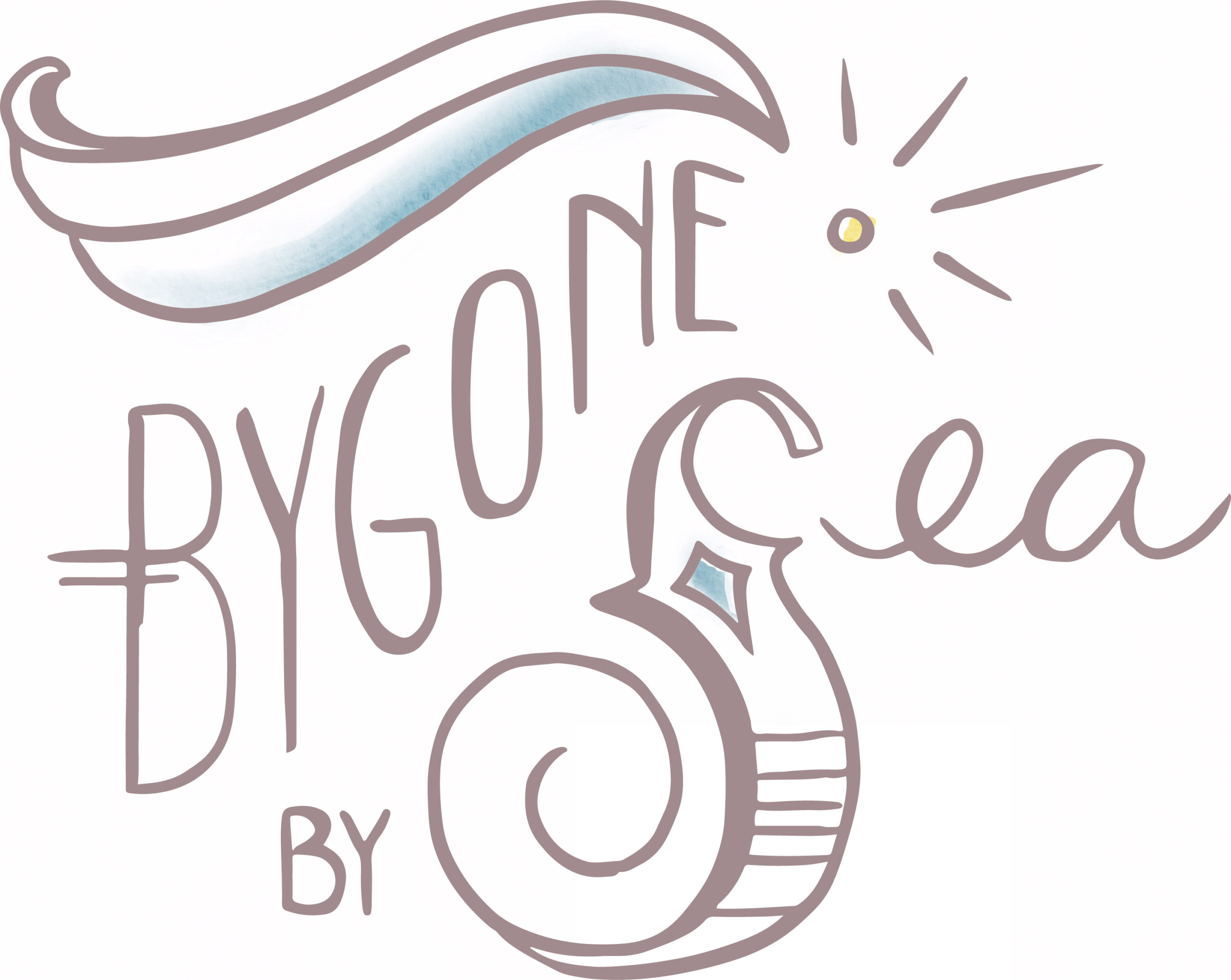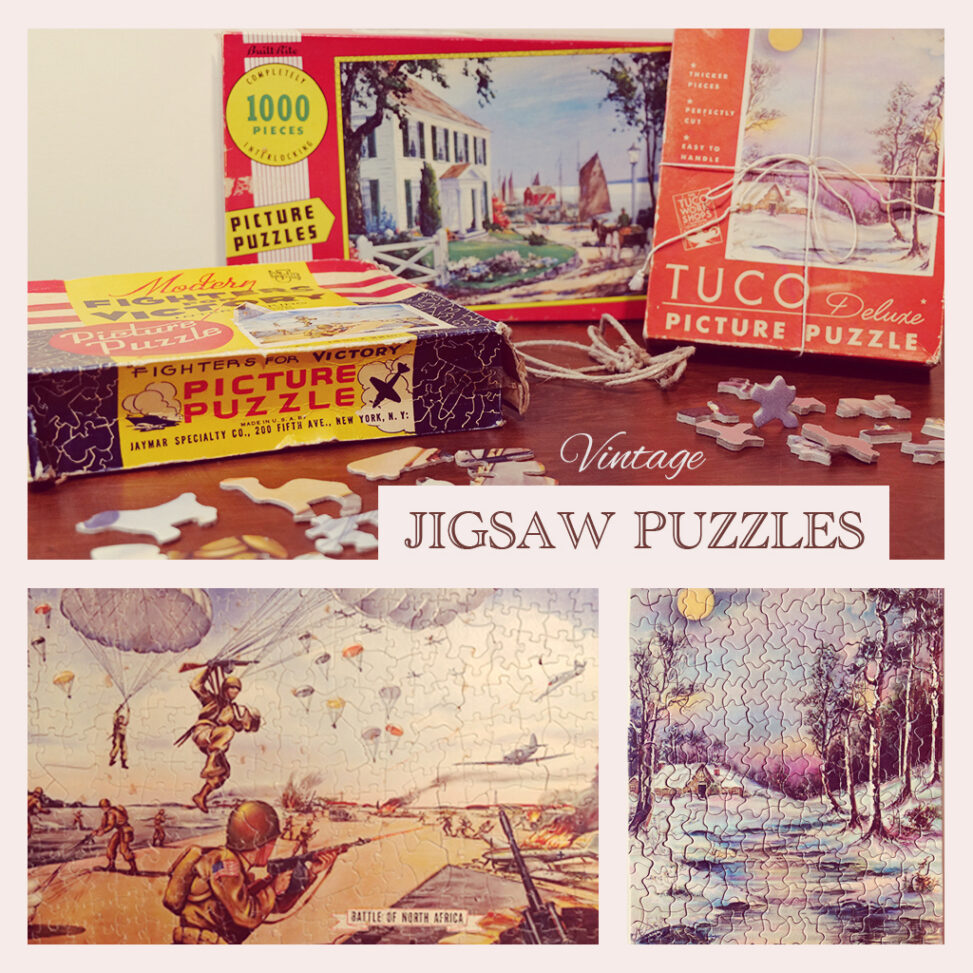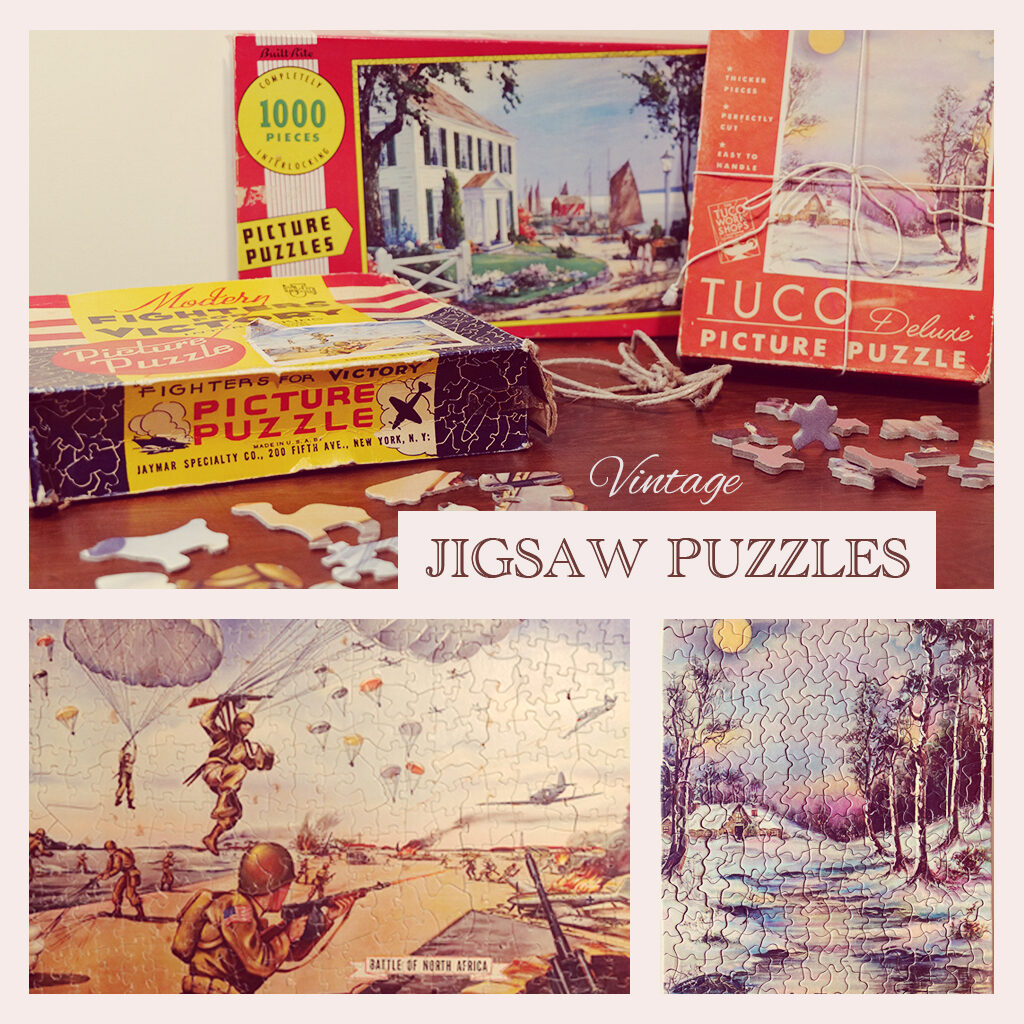
Those who know me well know that I am absolutely addicted to jigsaw puzzles. I don’t know why this is, but I have always loved the experience of putting them together – it is very gratifying. I have been collecting puzzles for years, and one of my favorite things to do is get lost in a nice pile of pieces that I can sort by color or pattern.
Supposedly, the first jigsaw puzzle was a map of Europe created in 1760 by John Spilsbury. According to the Alzheimer Society of Canada, doing jigsaw puzzles is one of the many activities that are good for brain health and avoiding the risk of Alzheimer’s disease. Another interesting fact is that there are 40,000 piece puzzles for sale for around $600! Where would one even find the room to accommodate something that size?!
The very talented photographer of the photos that appear in this blog and I were looking through a closet one day and found a few puzzles dating back to the 1940s. I was over the moon when I saw them! I very much love the authentic Art Deco style typography and vintage illustrations on the packaging. Come to find out they are all in tact with no missing pieces (I am told that this is because they were never put together until now).
Puzzle One
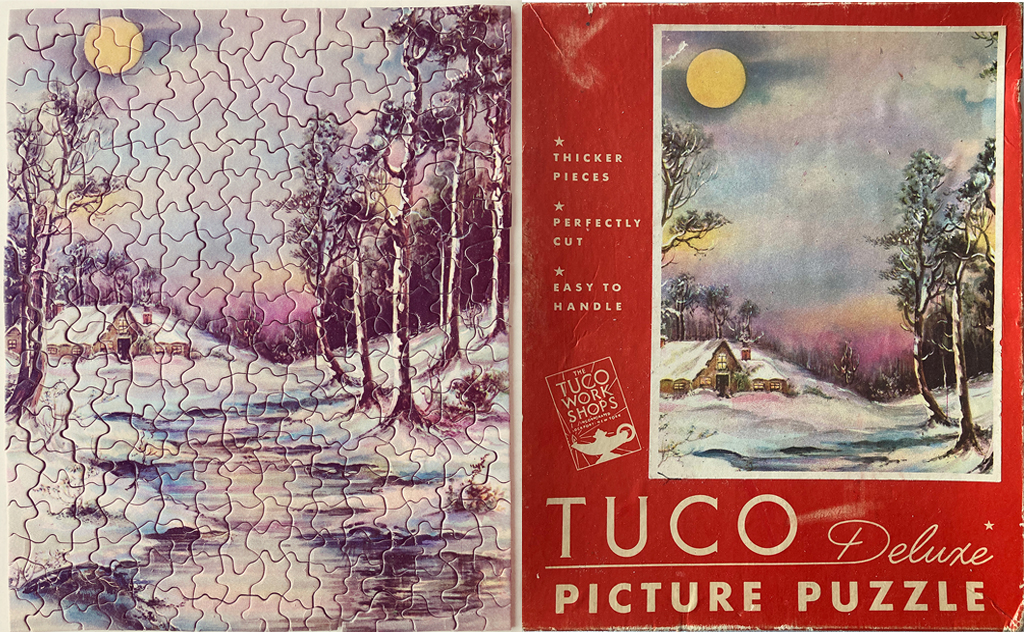
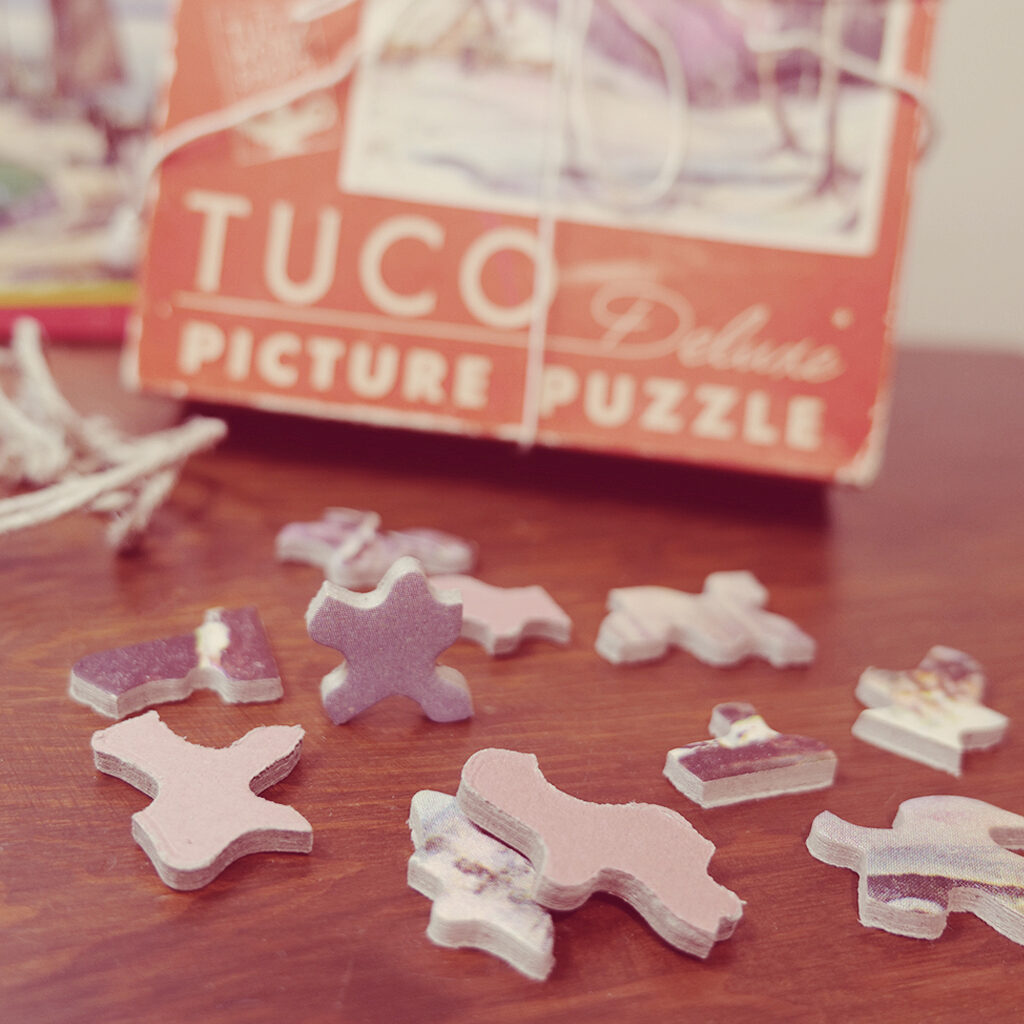
The Tuco Picture Puzzle was the most unique of the three we found. It is 16×20 inches with 300-500 pieces and was made in the USA around the 1930s – 40s by Tuco Work Shops from Upson board (a thick wallboard manufactured by The Upson Company in Lockport, NY 1910 – 1980s). The thickness of the pieces is why they don’t interlock, and the thickness is what had set them apart from puzzles made by other companies at the time.
My overall impression of this puzzle is that the sturdy pieces were nice to feel, but it was a total nightmare to hold together and move sections since the pieces were not made to interlock. This was one of the most difficult puzzles I had ever attempted. The image on the box also had around an inch of the scene all the way around removed. So that, along with colors that seemed off from the picture, is why the puzzle was put together blindly without reference to the original picture, for the most part. With the help of a few of my loved ones, this puzzle took several days to complete.
Puzzle Two
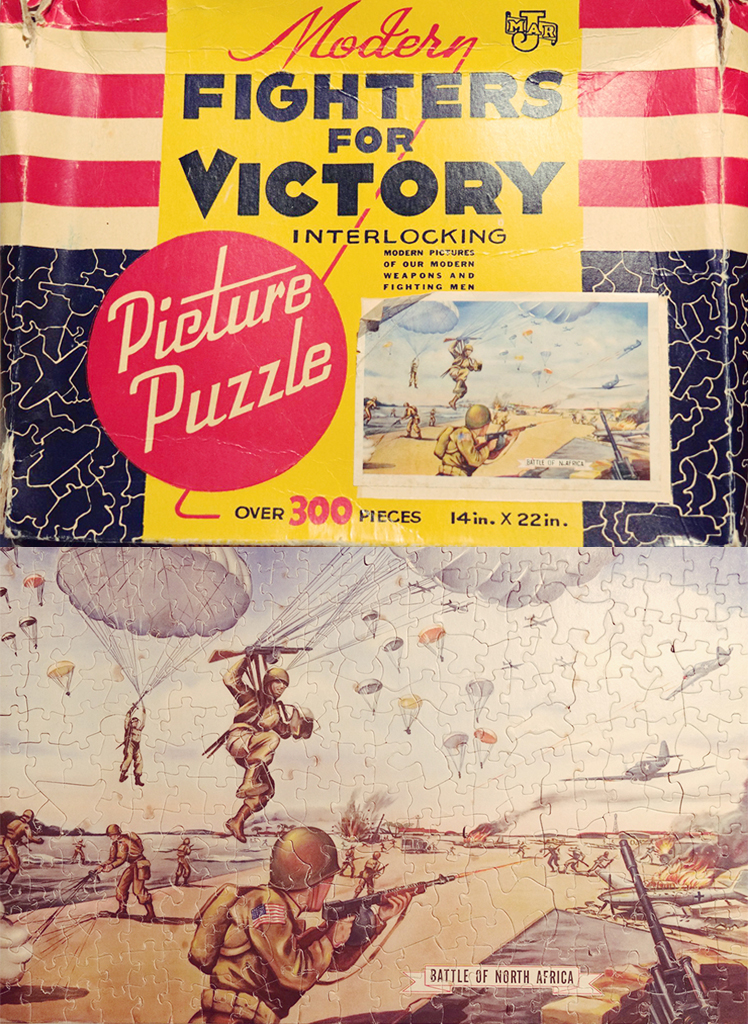
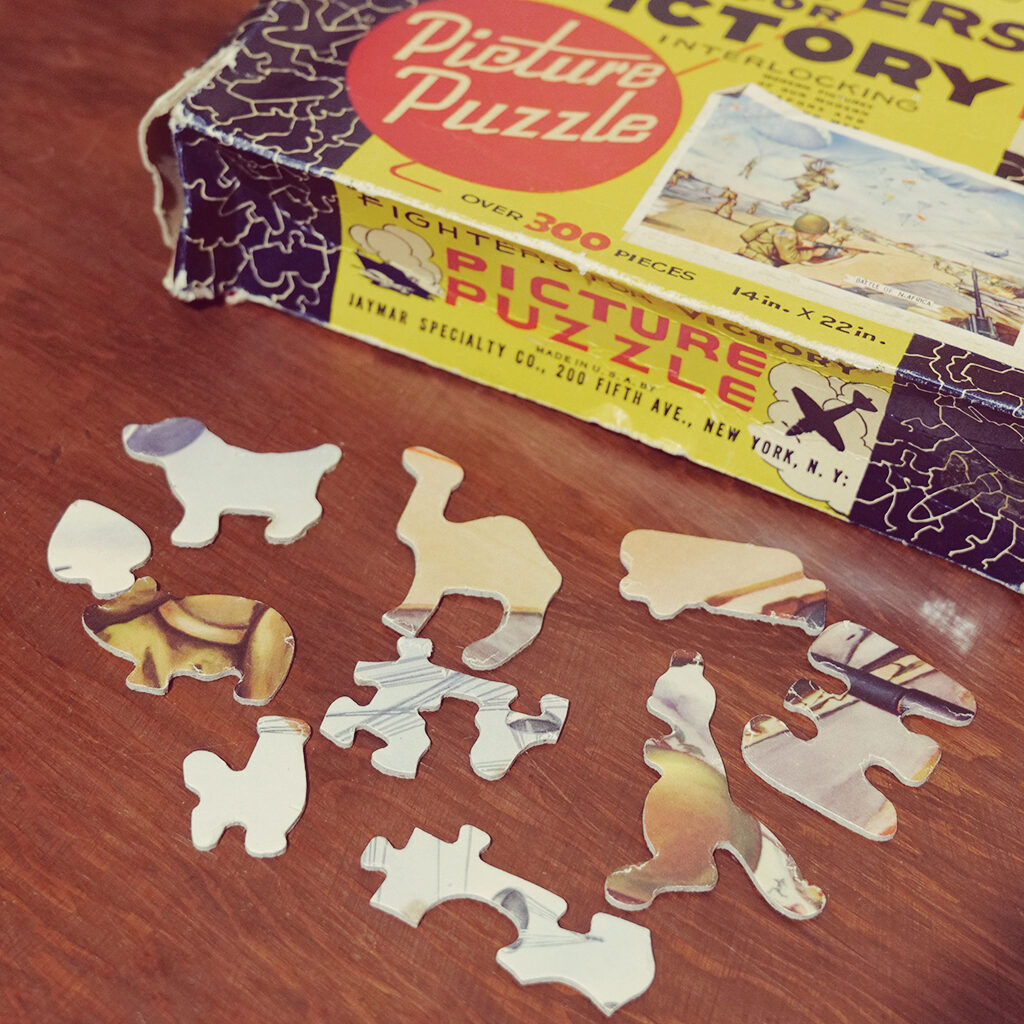
Next was the Modern Fighters for Victory Picture Puzzle: Battle of North Africa. At 14×22 inches with 300+ pieces, it was made in the USA in the 1940s by Jaymar Specialty Co. New York, NY, which was created by members of the Marx family who would later become linked with Kaybee Toy Store.
This WWII puzzle was one of the easiest I have put together as the pieces were interlocking and there were only around 300 pieces. The pieces were mostly very organic odd shapes and they included a few that made me giggle – a camel, a pig, a dog and a few others that were recognizable. With the help of my puzzle pal, I think this was done in one night.
Puzzle Three

Lastly, there is the Built Rite Picture Puzzle: Home by the Sea. This puzzle has 1000 pieces and was made around the 1940s in the USA by Warren Paper Products Co. Lafayette, IN. Built Rite Toys also produced a version of Old Maid that was instantly familiar to me from Old Maid cards I loved playing with while growing up.
I have not completed this puzzle yet, but I love coastal scenes, so this is next in my line-up! I had to laugh when I saw that the puzzle listed “Card Table Size” instead of actual dimensions. The shapes of the pieces look very normal by today’s standards and I figure that this will probably take up half of the dining room table once the Christmas railroad set is packed away until next year.
Happy Holidays!
